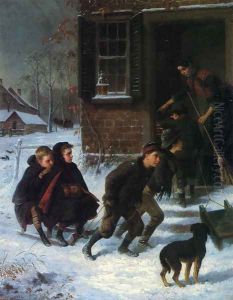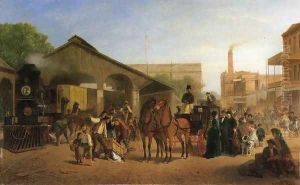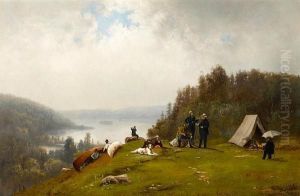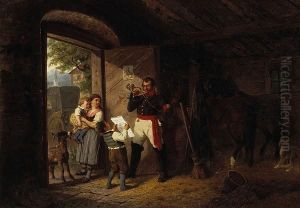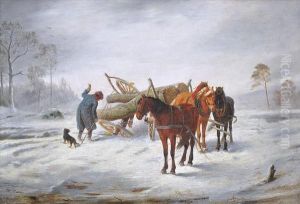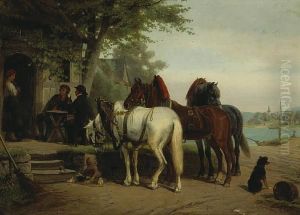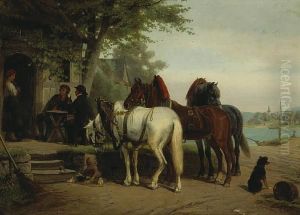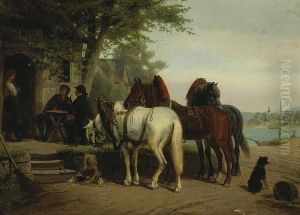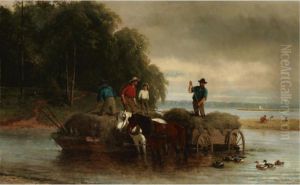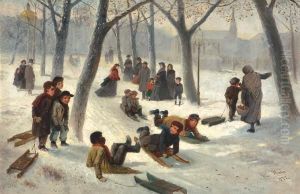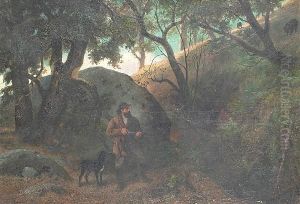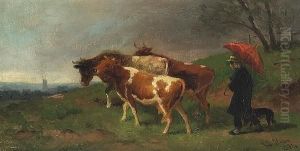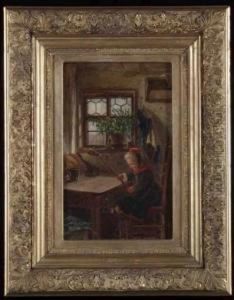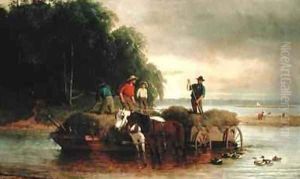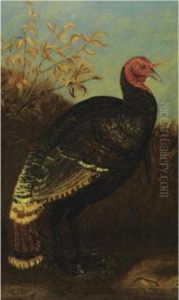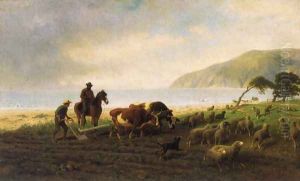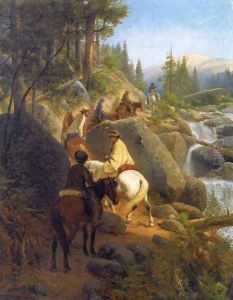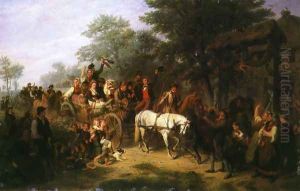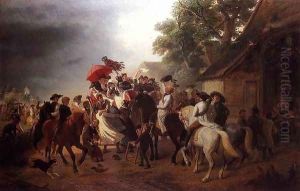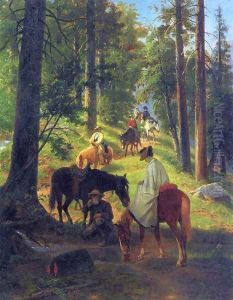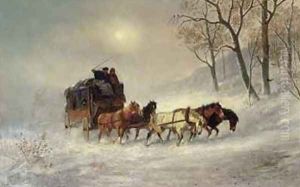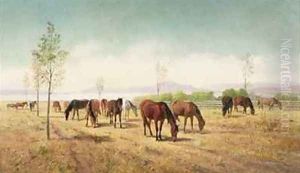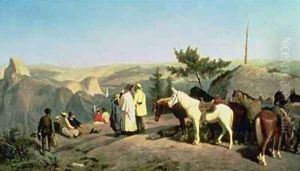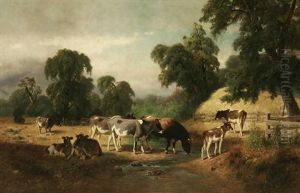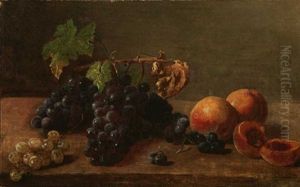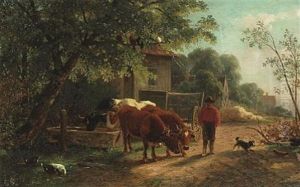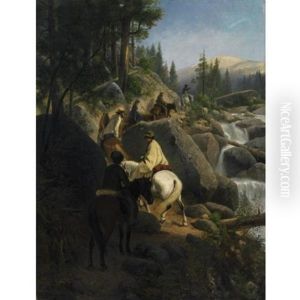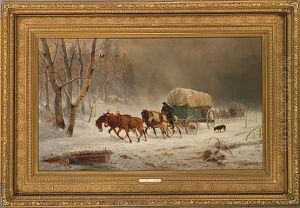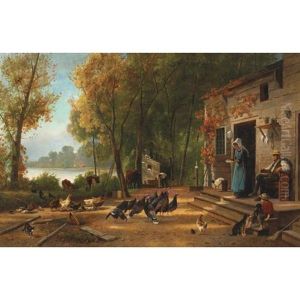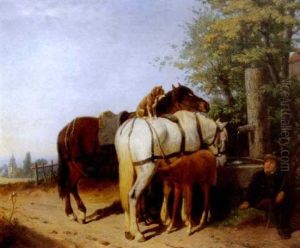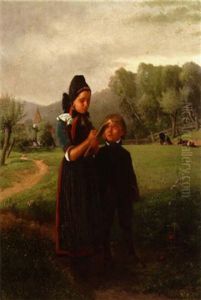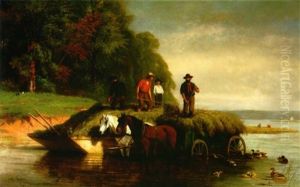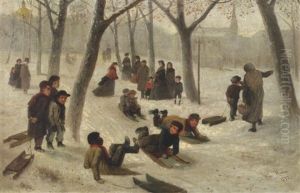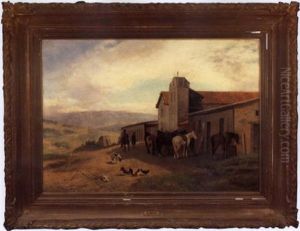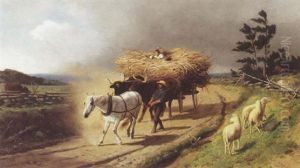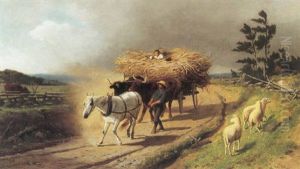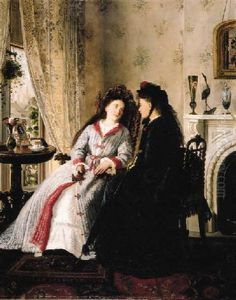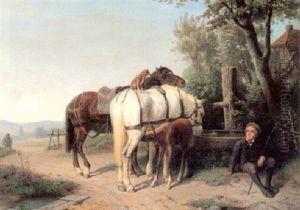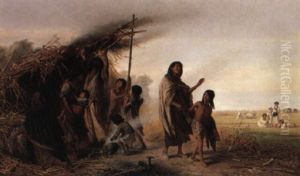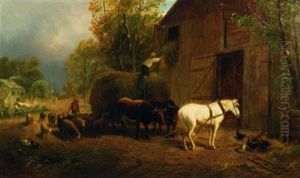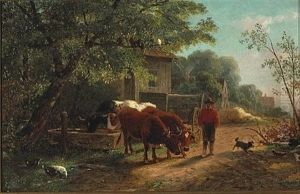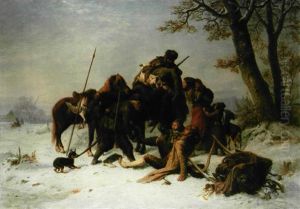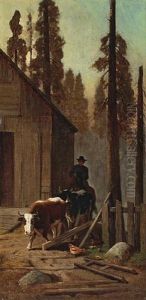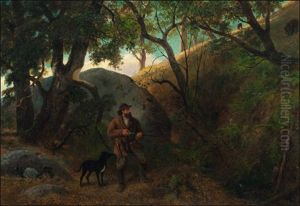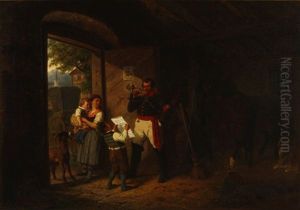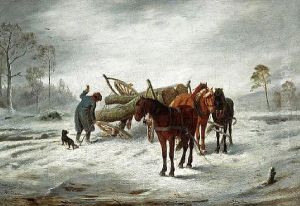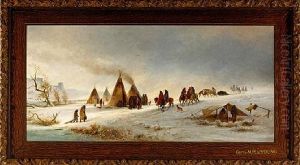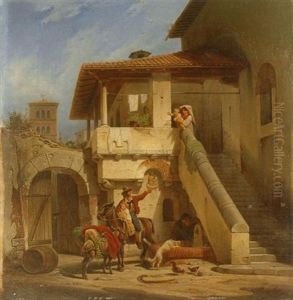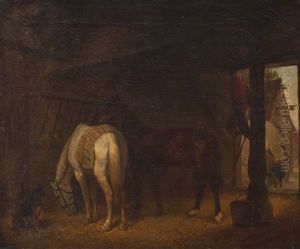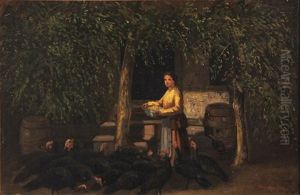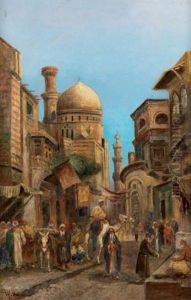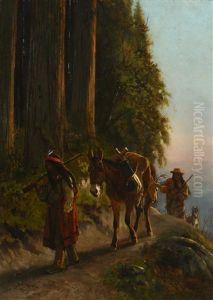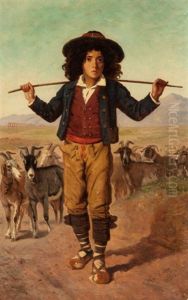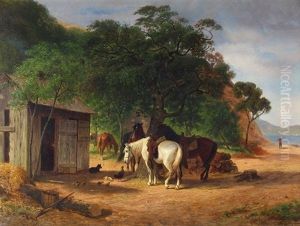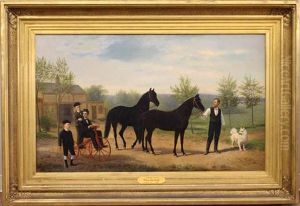William Hahn Paintings
William Hahn was a German-born artist who became known for his work in the United States, particularly in California. He was born on March 7, 1829, in Düsseldorf, Germany, a city renowned for its art academy and vibrant artistic community. Hahn studied at the Düsseldorf Academy, where he was trained in the fine arts, particularly painting. His education there would have been thorough, emphasizing technique and the academic style of painting.
After completing his studies, Hahn immigrated to the United States in the mid-19th century, a period when many European artists were drawn to the country's growing cities and expanding frontiers. He settled in San Francisco, California, which was rapidly developing following the Gold Rush of 1849. The burgeoning economic prosperity of the area provided ample opportunities for artists to find patrons among the wealthy elite.
In California, Hahn became known for his genre scenes, portraits, landscapes, and historical paintings. His style was influenced by his academic training in Düsseldorf, and he often depicted scenes of everyday life with fine detail and a sense of romanticism. He was particularly adept at capturing the light and atmosphere of the California landscape, which made his work popular with local patrons.
During his career, Hahn exhibited his work at various venues, including the San Francisco Art Association and the Mechanics' Institute Fair. His paintings were well received, and he built a reputation as a skilled painter in the region. Despite his success, there is not as much information available about Hahn's personal life compared to other artists of the era.
William Hahn passed away on December 12, 1887, in San Francisco. While he may not be as widely recognized today as some of his contemporaries, his contributions to the art scene in California during the 19th century were significant. His works are part of several collections and continue to be of interest to those studying the period's art and the cultural history of California.
